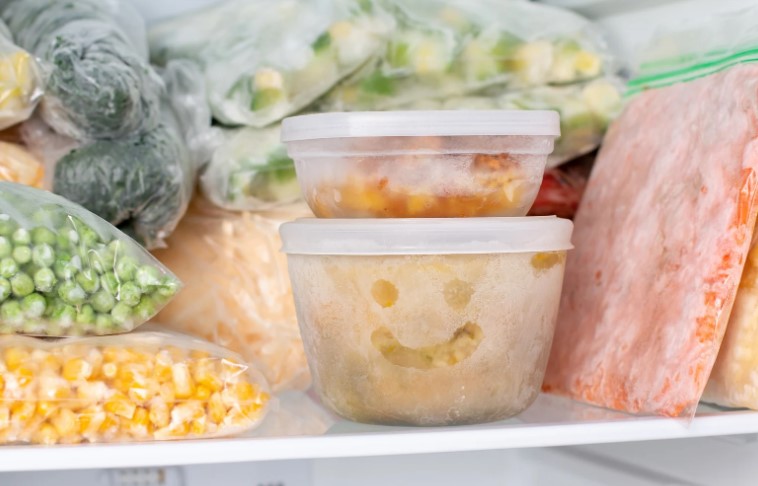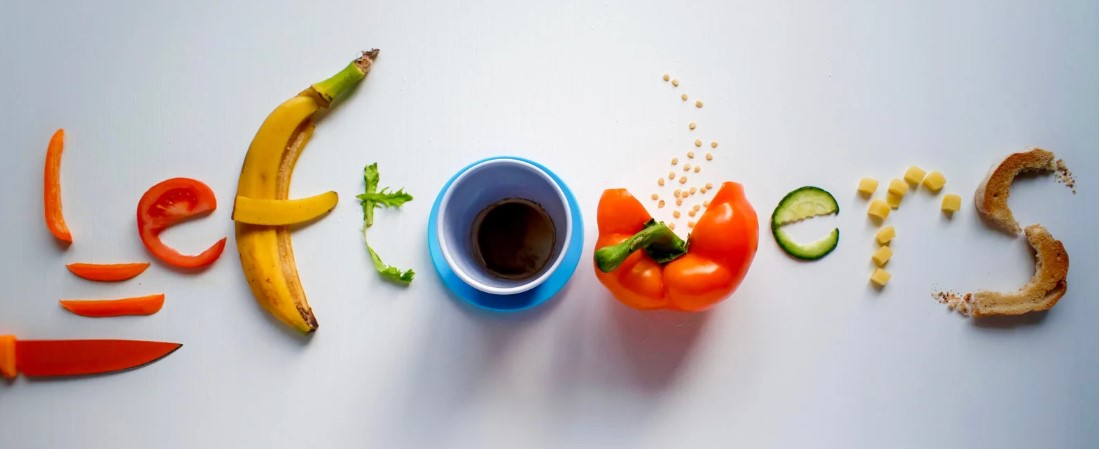- When freezing leftovers, they should be cooled within 4 hours. True or false?
- Why 4 Hours Is Too Long? - The Real Risk Behind Cooling Food Improperly
- What Happens If You Don’t Cool Food Within 2 Hours?
- Why Not Put Hot Food Straight Into the Freezer?
- How Do You Cool Leftovers Safely and Quickly?
- How Long Can You Keep Leftovers in the Freezer?
- Reheating Frozen Leftovers the Right Way
- Conclusion: What Every Student Should Remember
- Frequently Asked Questions On When freezing leftovers, they should be cooled within 4 hours
When freezing leftovers, they should be cooled within 4 hours. True or false?
Answer: False.
If you’re freezing leftovers, you should cool them and refrigerate within 2 hours, not 4. While 4 hours might sound like a generous window, it’s actually too long when it comes to food safety.
Letting cooked food sit at room temperature for more than 2 hours allows bacteria to multiply quickly — and that’s something freezing won’t fix.
Understanding why this is important can help you stay healthy, avoid food waste, and make your meals last longer — especially if you’re a student cooking in bulk or saving portions for later.
Why 4 Hours Is Too Long? – The Real Risk Behind Cooling Food Improperly
When food is freshly cooked, it’s usually too hot to go straight into the fridge or freezer. But letting it sit for too long on the kitchen counter is where things go wrong.
Between 8°C & 63°C, which is the “danger zone” — a temperature range where bacteria thrive. Every extra minute your food stays in that range gives bacteria more time to grow. The longer the exposure, the higher the risk of food poisoning.
That’s why the Food Standards Agency (FSA) and NHS UK both recommend this rule:
“Cool cooked food quickly at room temperature and place in the fridge within 1 to 2 hours.”
So, if you’ve been waiting 3 or 4 hours before refrigerating or freezing food, you’re unknowingly increasing your risk of foodborne illness.

What Happens If You Don’t Cool Food Within 2 Hours?
If you leave food out too long before refrigerating or freezing:
- Bacteria begin to multiply rapidly, especially on high-protein foods like meat, rice, pasta, or dairy-based dishes.
- Some bacteria (like Clostridium perfringens) produce toxins that aren’t always destroyed during reheating.
- Freezing food doesn’t eliminate bacteria—it simply puts them in a dormant state. If the food was contaminated before freezing, those bacteria can become active again once thawed and reheated, potentially causing issues.
Put simply, food left out too long before freezing may already be unsafe, even if it looks or smells fine.
Why Not Put Hot Food Straight Into the Freezer?
You might think it’s better to skip the risk and freeze food immediately, even while it’s still hot. But that’s not safe either.
Putting hot food directly into your freezer:
- Raises the temperature inside the freezer, which can partially thaw other frozen items.
- Prevents your leftovers from freezing evenly, especially in the centre.
- Can create condensation and lead to poor food texture or freezer burn.
Freezing doesn’t work like an “instant safety switch.” The food needs to be cooled properly first, so that freezing can lock in freshness — not bacteria.
How Do You Cool Leftovers Safely and Quickly?
If you’re worried about timing, here’s what works — and what I use personally when prepping meals:
- Divide large portions into smaller containers. Smaller amounts cool faster.
- Use shallow containers. They spread the food out, allowing heat to escape more efficiently.
- Leave containers uncovered in a cool part of the room (away from the oven or stove). Once steam stops rising, cover and refrigerate.
- Stir food occasionally, especially sauces, soups, or rice, to release trapped heat.
Aim to have the food cool to the touch within 90 minutes — that’s the sweet spot. Then refrigerate it. Once chilled, it can be frozen safely.
How Long Can You Keep Leftovers in the Freezer?
Once your food is properly cooled and frozen, it can stay there for quite a while. Usually cooked foods are safe in the freezer for about to 3 months.
After that, they might still be edible, but the taste, texture, and nutritional value will start to decline.
To stay organised, use airtight containers or freezer bags, and label everything with the date you froze it. This makes it easier to track and rotate your meals.

Reheating Frozen Leftovers the Right Way
Once you’re ready to eat your frozen leftovers:
- Defrost them safely, either in the fridge overnight or using your microwave’s defrost setting.
- Reheat completely until steaming hot all the way through — mainly in the centre.
- Don’t reheat food more than once. Each cycle increases the chance of bacterial growth.
This is particularly important with dishes containing rice, meat, eggs, or dairy — these ingredients are more likely to harbour dangerous bacteria if mishandled.
Conclusion: What Every Student Should Remember
So, to answer the original question “When freezing leftovers, they should be cooled within 4 hours. True or false?” The answer is clearly: False.
For safe storage:
- Cool food within 2 hours
- Refrigerate promptly
- Freeze only once the food is cool
Following this rule keeps your food safe, saves money, and helps you make the most of your meals — especially when you’re batch cooking, meal prepping, or trying to make your food stretch on a student budget.
Related Article: What Is the Coldest Setting on a Fridge 1-7?
Frequently Asked Questions On When freezing leftovers, they should be cooled within 4 hours
1. Should frozen leftovers be cooled within 4 hours?
No. Waiting 4 hours gives bacteria time to grow, which can lead to unsafe food — even if you freeze it later. So, it must be done within 2 hours.
2. How many hours should leftovers be cooled?
Ideally within 90 minutes, and definitely no more than 2 hours. That’s the safe window before bacterial risk increases significantly.
3. How long is it safe to freeze leftovers?
Up to 3 months. Food may last longer, but quality starts to drop. Always label containers with the freeze date and use older items first.
4. Can I freeze food that’s been left out for 4 hours?
No. If food was at room temperature for more than 2 hours, then it is not safe whether to eat or freeze. Discard it to avoid foodborne illness.
5. Do leftovers need to be fully cold before freezing?
They don’t need to be ice-cold, but they should be cool to the touch. Most people refrigerate them first, then transfer to the freezer after an hour or two.


0 Comments